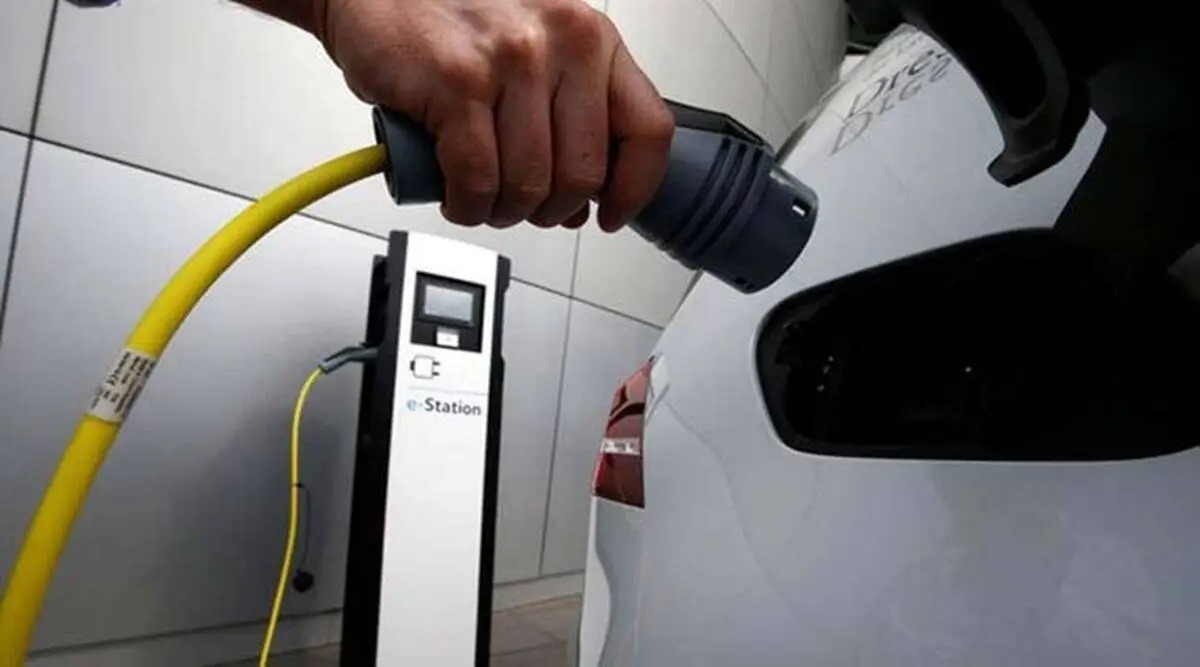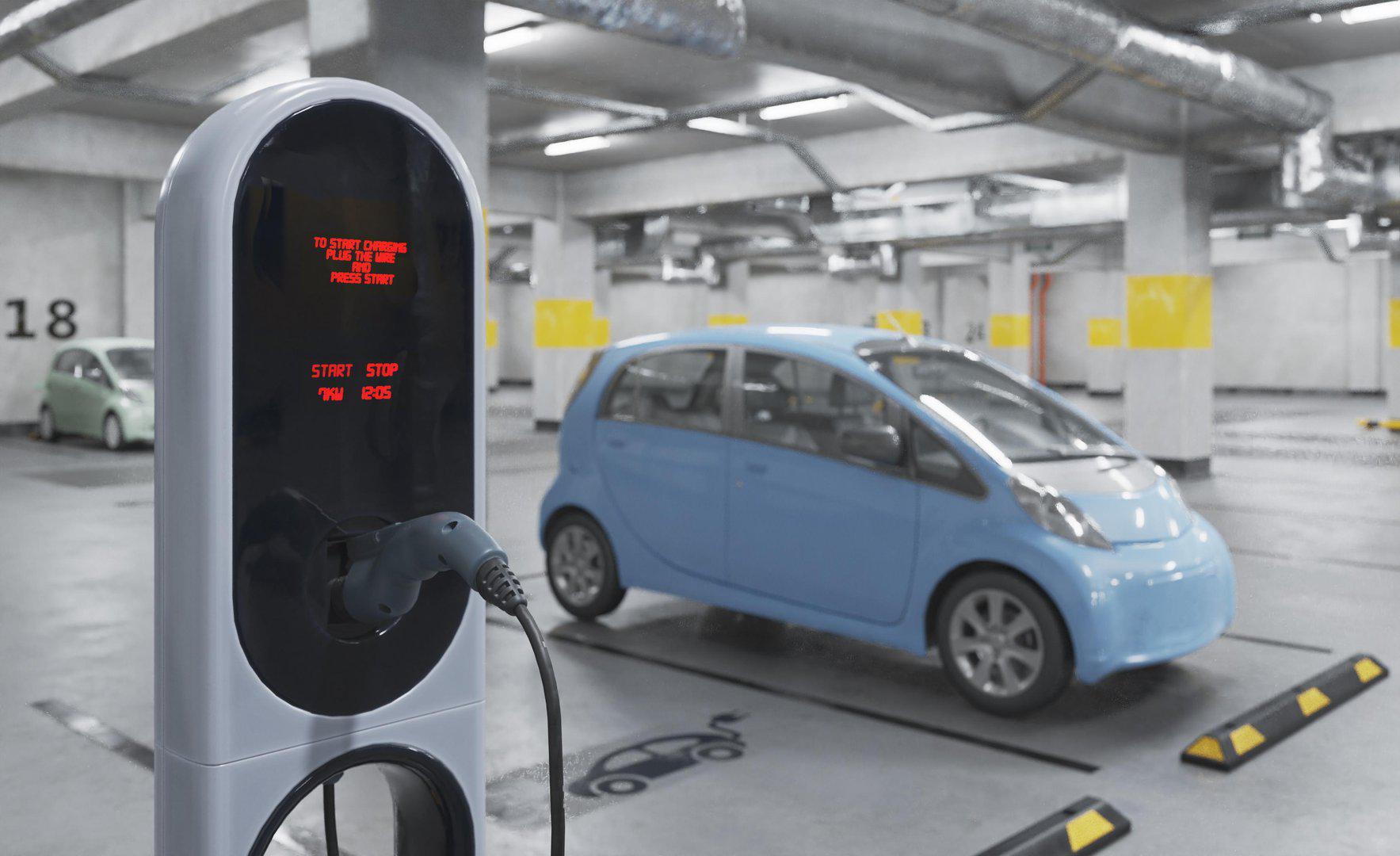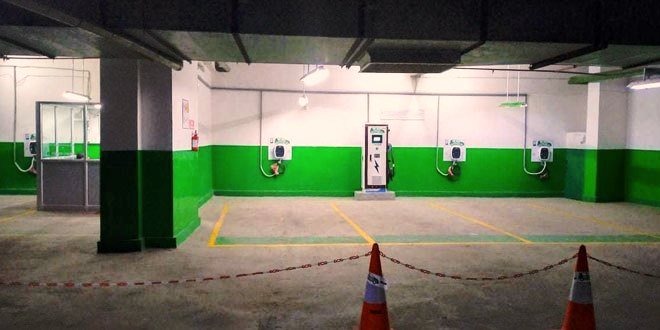Table of Content
- Introduction
- 1. Understanding the Importance of Charging Infrastructure
- 2. Challenges for Homebuyers in Housing Societies
- 3. The Role of Housing Societies in Promoting EV Adoption
- 4. Technological Innovations and Their Impact on EV Charging
- 5. Government Policies and Incentives for EV Charging Infrastructure
- 6. Case Studies: Success Stories of Housing Societies Adopting EV Charging Infrastructure
- 7. Future Trends in EV Charging for Residential Areas
- 8. Best Practices for Housing Societies Implementing EV Charging Infrastructure
- 9. The Financial Implications of Installing EV Charging Infrastructure
- 10. Addressing Common Concerns and Misconceptions
- Conclusion: The Path Forward for Housing Societies and Homebuyers
Introduction
As electric vehicles (EVs) gain popularity due to their environmental benefits and cost savings, the demand for charging infrastructure has become a critical factor influencing EV adoption. Homebuyers, particularly those looking to purchase properties in housing societies, face unique challenges when it comes to accessing reliable charging facilities. This article explores the impact of charging infrastructure on EV adoption, highlighting the challenges faced by homebuyers in housing societies and offering potential solutions to address these issues.
1. Understanding the Importance of Charging Infrastructure
Charging infrastructure is the backbone of the electric vehicle ecosystem. Without convenient and accessible charging options, the adoption of EVs is likely to be slow, especially in residential areas where people spend a significant amount of time.
- Convenience for EV Owners: For EV owners, having a charging station within easy reach, such as at home or within their residential complex, is essential for the practical use of their vehicles. This convenience can greatly influence their decision to purchase an EV.
- Impact on EV Adoption: The availability of charging infrastructure directly impacts the rate at which people switch from traditional internal combustion engine (ICE) vehicles to EVs. When charging options are limited, potential buyers may hesitate to make the transition.
- Environmental Benefits: A robust charging infrastructure supports the widespread use of EVs, contributing to reduced greenhouse gas emissions and lower air pollution levels.
2. Challenges for Homebuyers in Housing Societies
Homebuyers in housing societies face several challenges when it comes to accessing charging infrastructure. These challenges can significantly impact their decision to purchase an EV and their overall satisfaction with their residential community.
- Limited Charging Points: Many housing societies, especially older ones, lack dedicated EV charging points. This can make it difficult for residents to charge their vehicles, leading to inconvenience and frustration.
- High Installation Costs: Installing EV charging stations in housing societies can be expensive, especially if the existing electrical infrastructure is not equipped to handle the additional load. The cost of installation may be passed on to the residents, making it a financial burden for homebuyers.
- Space Constraints: In densely populated housing societies, space is often at a premium. Finding suitable locations for installing charging stations can be challenging, especially in complexes with limited parking spaces.
- Coordination Among Residents: In a housing society, decisions regarding the installation of EV charging infrastructure often require consensus among residents. Differing opinions and priorities can delay or complicate the implementation process.
- Power Supply Issues: Many housing societies are not equipped to handle the increased power demand that comes with multiple EVs charging simultaneously. Upgrading the power supply infrastructure can be costly and time-consuming.
- Regulatory and Legal Hurdles: Installing charging stations in housing societies may involve navigating complex regulatory and legal requirements, including obtaining permits, adhering to safety standards, and coordinating with local authorities.
3. The Role of Housing Societies in Promoting EV Adoption
Housing societies play a crucial role in facilitating the adoption of electric vehicles by providing the necessary charging infrastructure. By proactively addressing the challenges associated with EV charging, housing societies can attract environmentally conscious homebuyers and enhance the overall living experience for residents.
- Initiating Discussions: Housing society management can take the lead in initiating discussions about the installation of EV charging stations. By educating residents about the benefits of EVs and the importance of charging infrastructure, they can build consensus and support for the project.
- Exploring Funding Options: To alleviate the financial burden on residents, housing societies can explore various funding options, including government subsidies, grants, and partnerships with private companies that specialize in EV charging solutions.
- Optimizing Space Utilization: Housing societies can optimize the use of available space by installing compact and multi-functional charging stations. In some cases, they may consider redesigning parking areas to accommodate EV charging points.
- Collaborating with Power Suppliers: Housing societies can work with local power suppliers to upgrade the electrical infrastructure and ensure a stable power supply for EV charging. This collaboration can also involve exploring renewable energy sources, such as solar power, to make the charging process more sustainable.
- Compliance with Regulations: Housing societies must ensure that the installation of EV charging infrastructure complies with all relevant regulations and safety standards. This may involve working with legal experts and local authorities to navigate the regulatory landscape.
4. Technological Innovations and Their Impact on EV Charging
Technological advancements in the EV industry are constantly evolving, offering new solutions to the challenges of charging infrastructure. These innovations can play a significant role in making EV charging more accessible and convenient for residents of housing societies.
- Smart Charging Solutions: Smart charging systems can optimize the charging process by automatically adjusting the charging speed based on the availability of power and the number of vehicles connected to the grid. These systems can help manage the load on the electrical infrastructure, reducing the risk of power outages.
- Wireless Charging: Wireless or inductive charging technology is still in its early stages but holds great promise for the future. This technology eliminates the need for physical charging cables, making it easier to install charging points in crowded or space-constrained areas.
- Battery Swapping Stations: Battery swapping is an alternative to traditional charging, where depleted batteries are quickly exchanged for fully charged ones at designated stations. While this technology is more commonly used in commercial fleets, it could be adapted for residential use in the future.
- Renewable Energy Integration: Integrating renewable energy sources, such as solar panels, with EV charging stations can make the charging process more sustainable and reduce the reliance on grid electricity. This approach can also lower the overall cost of charging for residents.
- Mobile Charging Units: Mobile charging units, which can be deployed to various locations within a housing society, offer a flexible and scalable solution for EV charging. These units can be particularly useful in societies with limited space for permanent charging stations.

5. Government Policies and Incentives for EV Charging Infrastructure
Government policies and incentives play a critical role in promoting the development of EV charging infrastructure, particularly in residential areas. Homebuyers and housing societies can benefit from these initiatives, which are designed to make EV adoption more attractive and feasible.
- Subsidies for Charging Infrastructure: Many governments offer subsidies or financial incentives to housing societies and property developers for the installation of EV charging stations. These subsidies can significantly reduce the upfront costs of setting up the infrastructure.
- Tax Incentives for Homebuyers: Homebuyers who purchase properties with existing EV charging infrastructure may be eligible for tax incentives or rebates, further encouraging the adoption of electric vehicles.
- Mandates for New Developments: In some regions, governments have introduced mandates requiring new residential developments to include EV charging infrastructure as part of their building plans. These regulations ensure that future housing societies are equipped to support EV adoption.
- Public-Private Partnerships: Governments may collaborate with private companies to expand the availability of charging stations in residential areas. These partnerships can lead to the development of innovative charging solutions that meet the needs of housing societies.
- Support for Renewable Energy Integration: Governments may also provide incentives for housing societies that integrate renewable energy sources with their EV charging infrastructure, promoting a more sustainable approach to electric vehicle adoption.
Also Read: 10 Saving Strategies for First-Time Homebuyers
6. Case Studies: Success Stories of Housing Societies Adopting EV Charging Infrastructure
Examining case studies of housing societies that have successfully implemented EV charging infrastructure can provide valuable insights and inspiration for other communities looking to do the same.
- Case Study 1: Green Meadows Housing Society, Bengaluru
Overview: Green Meadows, a large housing society in Bengaluru, successfully installed 20 EV charging stations across its premises, making it one of the first residential complexes in the city to do so.
Challenges Faced: The society faced challenges related to space constraints, high installation costs, and the need for consensus among residents.
Solutions Implemented: The society's management initiated discussions with residents, secured funding through government subsidies, and partnered with a private company specializing in EV charging solutions. The society also upgraded its power supply infrastructure to handle the increased load.
Outcome: The installation of EV charging stations attracted environmentally conscious homebuyers and increased property values within the society.
- Case Study 2: Sunshine Apartments, Mumbai
Overview: Sunshine Apartments, a mid-sized housing society in Mumbai, installed EV charging points as part of a broader sustainability initiative.
Challenges Faced: The society encountered regulatory hurdles and had to navigate complex legal requirements for installing the charging infrastructure.
Solutions Implemented: The society worked closely with legal experts and local authorities to ensure compliance with all regulations. They also implemented a smart charging system to manage power demand effectively.
Outcome: The successful implementation of EV charging infrastructure enhanced the society's reputation as a sustainable living community, attracting new residents and increasing the overall satisfaction of existing homeowners.

7. Future Trends in EV Charging for Residential Areas
As the adoption of electric vehicles continues to grow, future trends in EV charging are likely to have a significant impact on residential areas, including housing societies. Understanding these trends can help homebuyers and housing societies prepare for the evolving landscape of EV infrastructure.
- Expansion of Fast Charging Networks: Fast charging stations, which can charge an EV in a matter of minutes, are expected to become more widespread in residential areas. Housing societies may need to upgrade their infrastructure to support these high-powered chargers.
- Community Charging Hubs: Community charging hubs, where multiple EVs can be charged simultaneously, are likely to become more common in housing societies. These hubs can be strategically located to serve large numbers of residents efficiently.
- Integration with Smart Grids: The integration of EV charging infrastructure with smart grids will allow for more efficient energy management, reducing the risk of power outages and optimizing the use of renewable energy sources.
- Demand Response Programs: Demand response programs, which encourage EV owners to charge their vehicles during off-peak hours, can help manage the load on the electrical grid and reduce energy costs for residents.
- Vehicle-to-Grid (V2G) Technology: Vehicle-to-Grid (V2G) technology allows electric vehicles to send excess power back to the grid during peak demand times. This not only helps stabilize the grid but also provides an additional source of income or savings for EV owners. Housing societies may consider integrating V2G capabilities into their charging infrastructure to benefit residents.
- Shared EV Charging Systems: With the growing trend of shared mobility, housing societies might adopt shared EV charging systems, where multiple residents share access to charging points. This could be an efficient solution for societies with limited space or resources.
- Automated and Robotic Charging: As technology advances, automated or robotic charging systems that can charge vehicles without human intervention are expected to become more prevalent. These systems could optimize parking space utilization and provide a seamless charging experience for residents.
8. Best Practices for Housing Societies Implementing EV Charging Infrastructure
For housing societies looking to implement EV charging infrastructure, following best practices can ensure a smooth and successful process. Here are some key considerations:
- Conduct a Feasibility Study: Before installing EV charging stations, housing societies should conduct a feasibility study to assess the demand for EV charging, the capacity of the existing electrical infrastructure, and potential locations for charging points.
- Engage with Residents: Involve residents in the decision-making process by conducting surveys or holding meetings to gauge interest in EV charging infrastructure. Transparent communication can help build consensus and avoid conflicts.
- Partner with Experts: Collaborate with companies that specialize in EV charging solutions to design and install the infrastructure. These experts can provide valuable insights on the latest technologies and ensure that the installation complies with all relevant regulations.
- Plan for Scalability: As EV adoption grows, the demand for charging infrastructure will increase. Housing societies should plan for scalability by installing charging stations that can be easily expanded or upgraded in the future.
- Consider Energy Management Solutions: Implementing energy management solutions, such as smart charging systems or integrating renewable energy sources, can help housing societies optimize power usage and reduce energy costs.
- Monitor and Maintain Infrastructure: Regular monitoring and maintenance of EV charging stations are essential to ensure their reliable operation. Housing societies should establish a maintenance schedule and designate a team responsible for overseeing the infrastructure.

Also Read: Ganpati Decoration Ideas: Elevate Your Festive Decor with Floral Elegance
9. The Financial Implications of Installing EV Charging Infrastructure
Installing EV charging infrastructure in housing societies involves financial considerations that can impact both the society as a whole and individual residents. Understanding these implications is crucial for making informed decisions.
- Initial Investment: The initial cost of installing EV charging stations can vary depending on the type of chargers, the number of stations, and the need for electrical upgrades. Housing societies must budget for these expenses and explore funding options, such as government subsidies or grants.
- Ongoing Maintenance Costs: Regular maintenance is necessary to keep the charging stations operational. This includes costs for repairs, software updates, and any necessary upgrades. Housing societies may need to establish a maintenance fund to cover these expenses.
- Impact on Property Values: The availability of EV charging infrastructure can enhance property values within a housing society. Homes in societies with charging stations are likely to be more attractive to environmentally conscious buyers, leading to higher demand and potentially higher resale prices.
- Energy Costs: The cost of electricity used for charging EVs will be an ongoing expense. Housing societies may need to implement a billing system to fairly distribute these costs among residents who use the charging stations.
- Potential Revenue Streams: Housing societies can generate revenue by charging fees for the use of EV charging stations. This revenue can help offset the initial installation costs and contribute to the society’s overall budget.
10. Addressing Common Concerns and Misconceptions
When implementing EV charging infrastructure, housing societies may encounter concerns and misconceptions from residents. Addressing these concerns through education and clear communication is key to gaining support.
- Concern: High Installation Costs
Response: While the initial investment can be significant, government subsidies and grants are available to help offset the costs. Additionally, the long-term benefits, such as increased property values and potential revenue from charging fees, can outweigh the initial expenses.
- Concern: Limited Space for Charging Stations
Response: Housing societies can explore innovative solutions, such as compact charging units or shared charging systems, to optimize the use of available space. A feasibility study can help identify the best locations for charging stations.
- Misconception: EVs Will Overload the Electrical Infrastructure
Response: Modern EV charging stations are designed to manage power demand effectively, and smart charging systems can further optimize energy usage. Upgrading the electrical infrastructure to support EV charging can be done gradually, in line with growing demand.
- Misconception: EVs Are a Passing Trend
Response: The shift towards electric vehicles is driven by global efforts to reduce carbon emissions and dependence on fossil fuels. EVs are becoming increasingly popular, and investing in charging infrastructure is a forward-looking decision that aligns with future trends.
Conclusion: The Path Forward for Housing Societies and Homebuyers
The adoption of electric vehicles is not just a trend but a critical component of the global movement towards sustainable living. For homebuyers in housing societies, access to reliable and convenient EV charging infrastructure is becoming an essential factor in their decision-making process. Housing societies that proactively address the challenges associated with EV charging infrastructure will not only attract more residents but also contribute to the broader goal of reducing carbon emissions and promoting cleaner transportation options.
By understanding the importance of charging infrastructure, recognizing the challenges faced by homebuyers, and implementing best practices for installation and management, housing societies can create a supportive environment for EV adoption. As technology continues to evolve and government policies become more favorable, the future of EV charging in residential areas looks promising. Housing societies that embrace this change will be well-positioned to meet the needs of the next generation of homeowners and contribute to a more sustainable future.
Also Read: How to Prepare Your Home for a Natural Disaster: A Comprehensive Guide

_1725432429.webp)

_1766133697.webp)






Ans 1. EV charging infrastructure refers to the network of stations and equipment designed to charge electric vehicles. This includes different types of chargers such as Level 1, Level 2, and DC Fast Chargers.
Ans 2. Adequate charging infrastructure helps reduce range anxiety, increases convenience for EV owners, and can lower the overall cost of operating an electric vehicle, thus promoting wider adoption.
Ans 3. Challenges include limited space for charging stations, high installation costs, regulatory and management issues, power supply and load management, and equitable cost-sharing among residents.
Ans 4. Housing societies can explore government incentives, seek partnerships with private charging network providers, and develop fair cost-sharing models among residents.
Ans 5. Smart charging solutions are technologies that optimize charging times and manage electrical loads to ensure efficient and cost-effective use of power for EV charging stations.
Ans 6. Yes, various government grants and subsidies are available to support the installation of EV charging infrastructure. These incentives can help reduce the financial burden on housing societies and individual homeowners.
Ans 7. Fair access can be ensured through transparent communication, equitable allocation policies, and involving residents in decision-making processes related to the installation and use of charging stations.
Ans 8. The presence of EV charging infrastructure can potentially increase property values by appealing to environmentally conscious buyers. However, if not managed properly, it could also negatively impact property values.
Ans 9. Steps include upgrading electrical systems, optimizing available space for charging stations, and investing in modern and efficient charging technologies.
Ans 10. The future will likely see advancements in charging technologies, evolving regulations, and increased integration of EV charging facilities in residential and commercial spaces, making electric mobility more accessible and convenient.